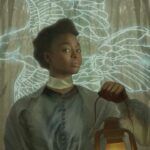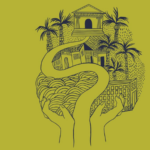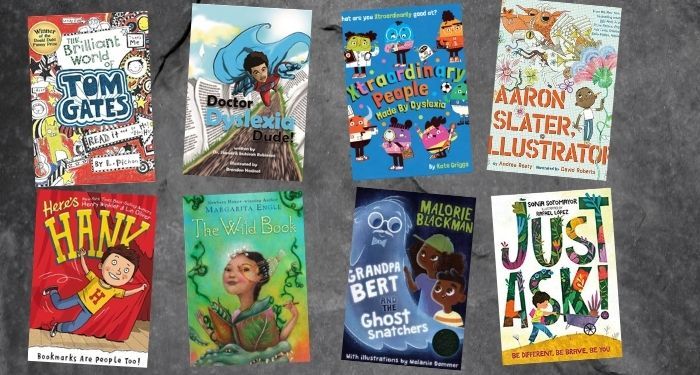
Best Dyslexia-Friendly Books for Kids
While I don’t have dyslexia myself, I regularly receive requests from library patrons looking for dyslexia-friendly books for kids. But just in case, let’s suppose you aren’t entirely sure what dyslexia actually means, and start with some information. I like the definition listed on the Made By Dyslexia foundation’s website: “a genetic difference in an individual’s ability to learn and process information.”
Generally speaking, it’s a way of thinking differently. Some markers of dyslexia include having to read something multiple times before it makes sense, regularly losing place while reading, finding traditional book pages too cluttered, and spelling issues due to omitting or transposing words. Additionally, dyslexic readers can struggle with breaking down words to pronounce. It isn’t something to cure, either, but many kids with dyslexia can learn coping strategies that help them read. If you’d like to learn more about dyslexia and ways of teaching reading proficiency to varying audiences, there’s more about that in this post by Mikkaka Overstreet, a literacy professor.
In my own efforts to educate myself more, I’ve compiled this list of books written for kids with dyslexia. The books are formatted specifically to encourage easier processing for kids with dyslexia. For instance, many use large, handwriting-resembling fonts, wider spacing, and images with strong black and white ink contrast. Graphic designer Christian Boer, who is dyslexic, created a font called Dyslexie. He developed it specifically to support reluctant and dyslexic readers — making letters like ‘b’ and ‘d’ more bottom-heavy, giving larger than usual openings in letters like ‘a’ and ‘e’, and extending the ascenders and descenders. Another way of helping readers with dyslexia is that many of these books have short chapters, allowing readers to stop and take breaks without breaking the tempo of the story.
I hope that this list will give you ideas for ways to support the learning process of any neurodivergent kiddos that you know.
Picture Books for Kids With Dyslexia
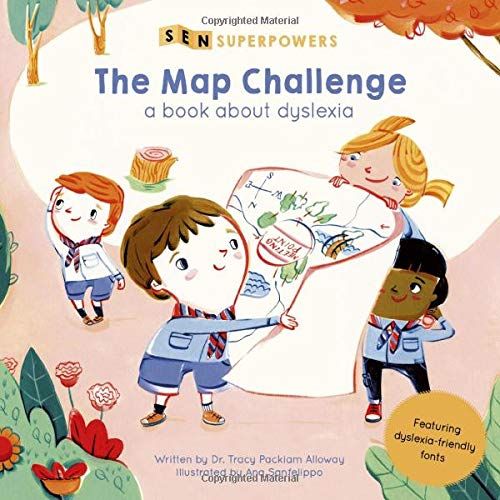
The Map Challenge: A Book About Dyslexia by Tracy Packiam Alloway and Ana Sanfelippo
This picture book is part of a series aimed at explaining neurodivergent functioning to kids. In this story, a boy named Sammy helps his friends when they lose a map while on a camping trip.
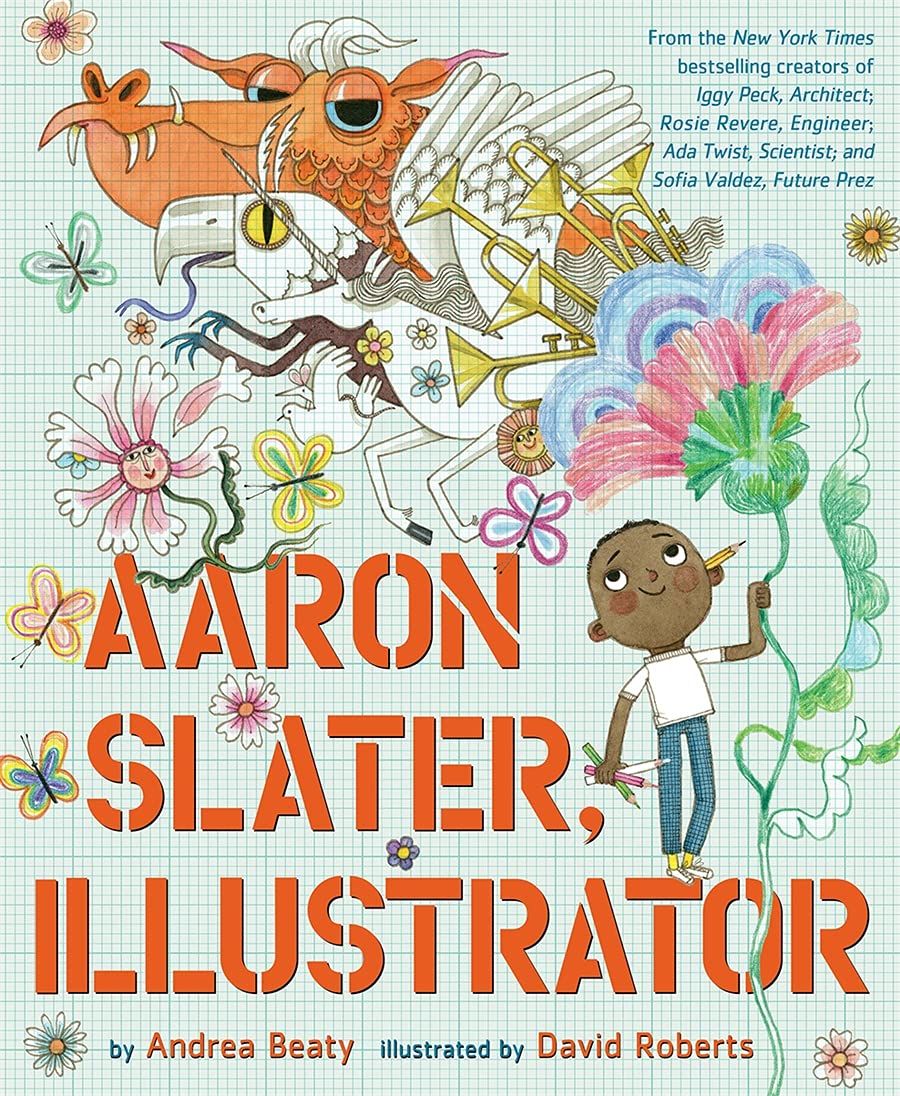
Aaron Slater, Illustrator by Andrea Beaty and David Roberts
Beaty and Roberts’s The Questioneers series is always delightful. In this latest title, they introduce a dyslexic little boy named Aaron. When his teacher asks the class to write a story, Aaron struggles with putting words down on paper. Eventually, though, he finds a way to share through art.
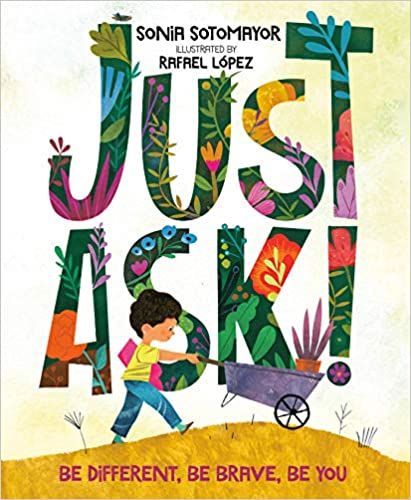
Just Ask! Be Different, Be Brave, Be You by Sonia Sotomayor and Rafael López
Not exclusively about dyslexia, instead, it covers a wide range of diverse abilities. Explaining neurological and physical abilities to kids (and adults, frankly) isn’t always easy, but Justice Sotomayor’s text celebrates people’s diversity and provides an important opening for adults and children to discuss how all people have different abilities.
Chapter Books for Kids With Dyslexia
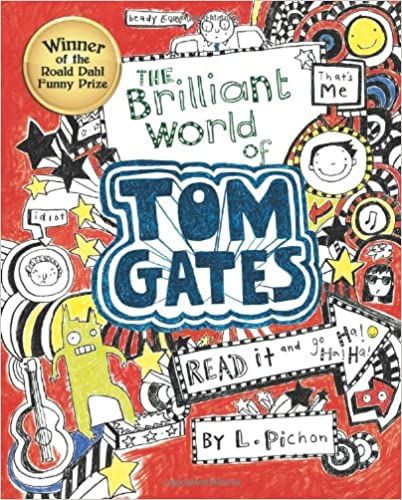
The Brilliant World of Tom Gates by Liz Pichon (Tom Gates #1)
Pichon grew up with undiagnosed dyslexia, which she only came to realize when her oldest son was diagnosed. So she fashioned the Tom Gates series on what visually works for them, explaining in a Huffington Post interview that their diagnoses helped “in remembering the kind of things both he and I loved when we were that age, struggling with words. I loved comics and books that were visual, books that you would open up and get to the story straight away.”
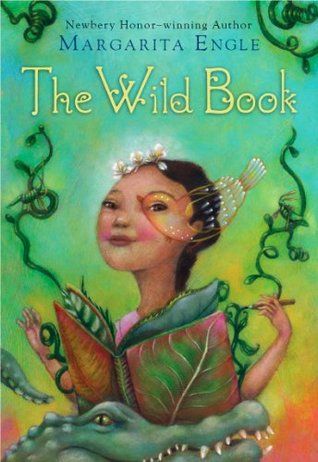
The Wild Book by Margarita Engle
Written in verse, this historical fiction is set in Cuba and tells the story of a young girl named Fefa. Told that she has “word blindness” (an outdated term for dyslexia), Fefa fights to defy others’ expectations and learn to read. When her mother gives her a notebook to write in, Fefa begins to learn on her own terms.
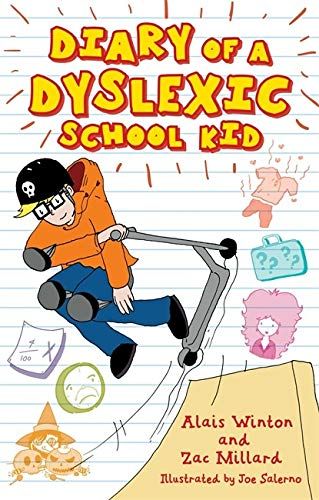
Diary of A Dyslexic School Kid by Alais Winton and Zac Millard
Winton is a tutor who works with dyslexic kids and her co-author, Zac Millard, is a teenage boy with dyslexia. Along with providing dyslexic kids with a relatable protagonist and funny story, it also gives helpful tips based on Millard’s real-life experiences.
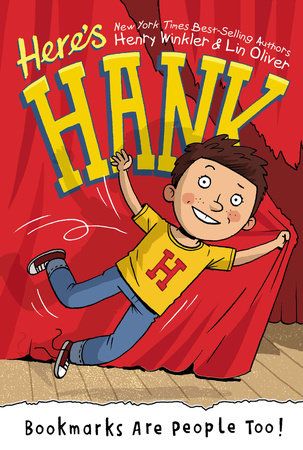
Bookmarks Are People Too (Here’s Hank #1) by Henry Winkler, Lin Oliver, and Scott Garrett
Inspired by his own dyslexia, beloved comedic actor Winkler has written a book series that is at the top of many a list of dyslexia-friendly books for kids. There are seven total entries in the series but this first one follows a nervous Hank as he participates in the school play. He’s a charming and quick-witted little kid who you can’t help but root for, and the book is so delightfully odd!
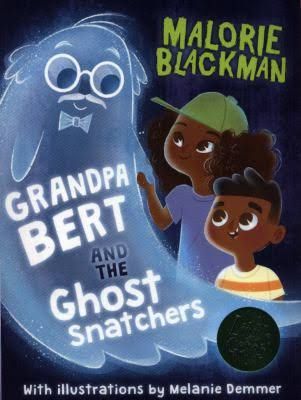
Grandpa Bert and the Ghost Snatchers by Malorie Blackman and Melanie Demmer
When Anna and Kasper’s Grandma comes for a visit, she brings along an unexpected consort — the ghost of Grandpa Bert! Unfortunately, along with their spectral relation comes a whole bunch of trouble. This book was published by Barrington Stoke, a Scottish publishing company that specializes in creating books for reluctant and dyslexic readers. Visit their site and you’ll find lots of dyslexia-friendly books for kids.
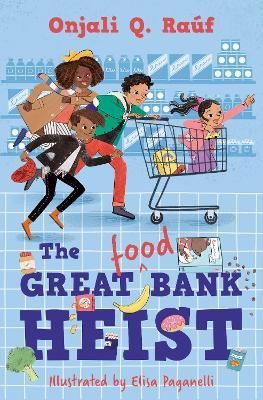
The Great (Food) Bank Heist by Onjali Q. Raúf and Elisa Paganelli
Another dyslexia-friendly title from Barrington Stoke, Raúf tells an exciting adventure story centering the topic of food poverty. Nelson, Ashley, and their mom go to the food bank every week until a thief begins “making off with food.” As shelves grow barer, Nelson decided to find out who the (food) bank robber is.
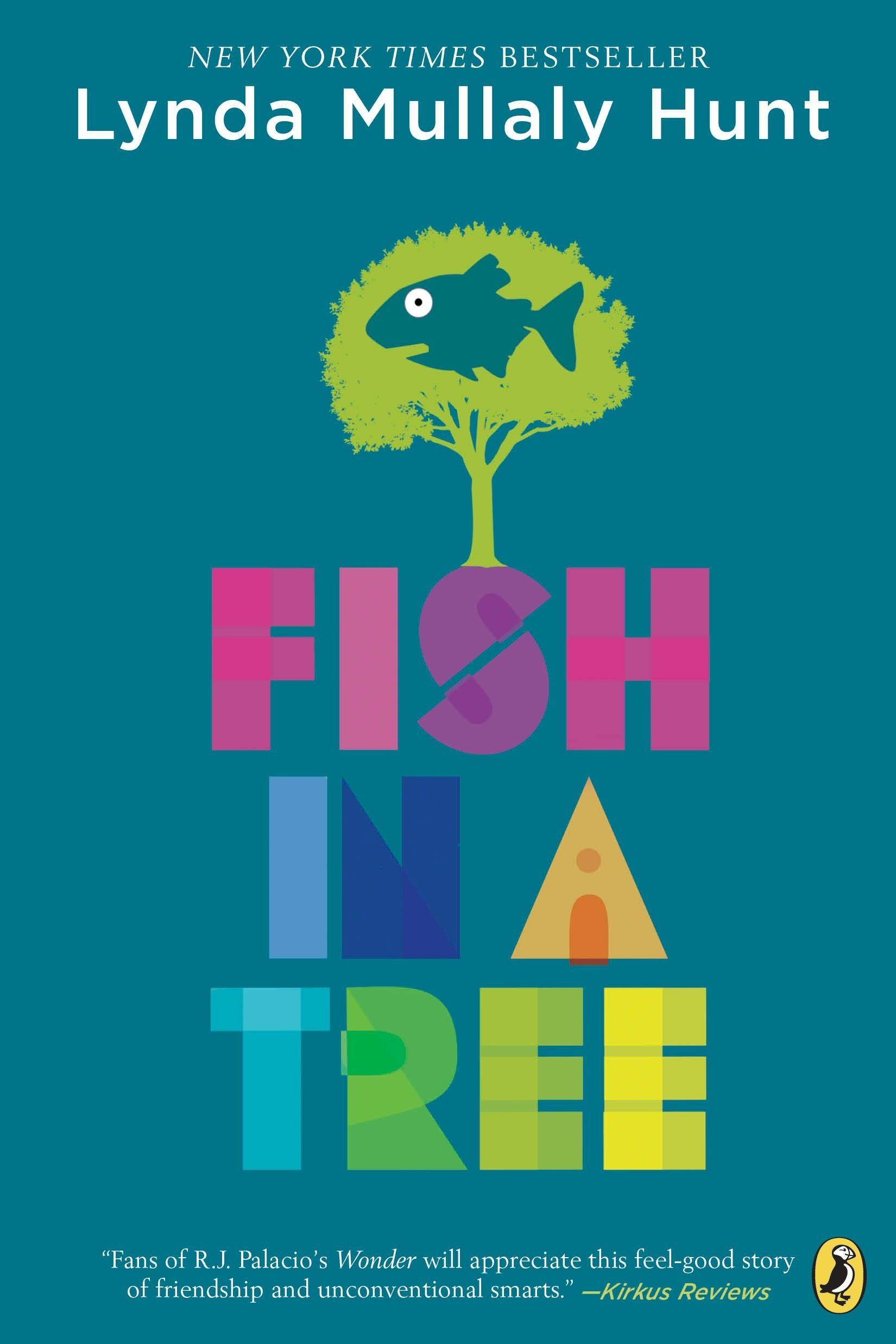
Fish in a Tree by Lynda Mullaly Hunt
While this novel isn’t formatted in any special way, it’s a great novel focusing on a character with dyslexia. Ally is quite skilled at hiding her inability to read. She is ashamed of asking for help, but eventually does with the support of her teacher, Mr. Daniels. Ultimately, she learns that there isn’t one way of learning that works for everyone, and so she isn’t any less smart because she needs different things.
Graphic Novels for Kids With Dyslexia
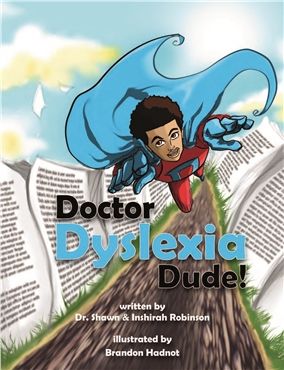
Dr. Dyslexia Dude by Dr. Shawn Robinson, Inshirah Robinson and Brandon Hadnot-Walker
Robinson based this graphic novel on his own experiences, hoping to empower neurodivergent students. The book positions Robinson’s stand-in as a brave superhero who will inspire kids to be resilient and successful. Visit the official page if you’d like to read more about this exciting project, including interviews with the creative team behind it.
Nonfiction for Kids With Dyslexia
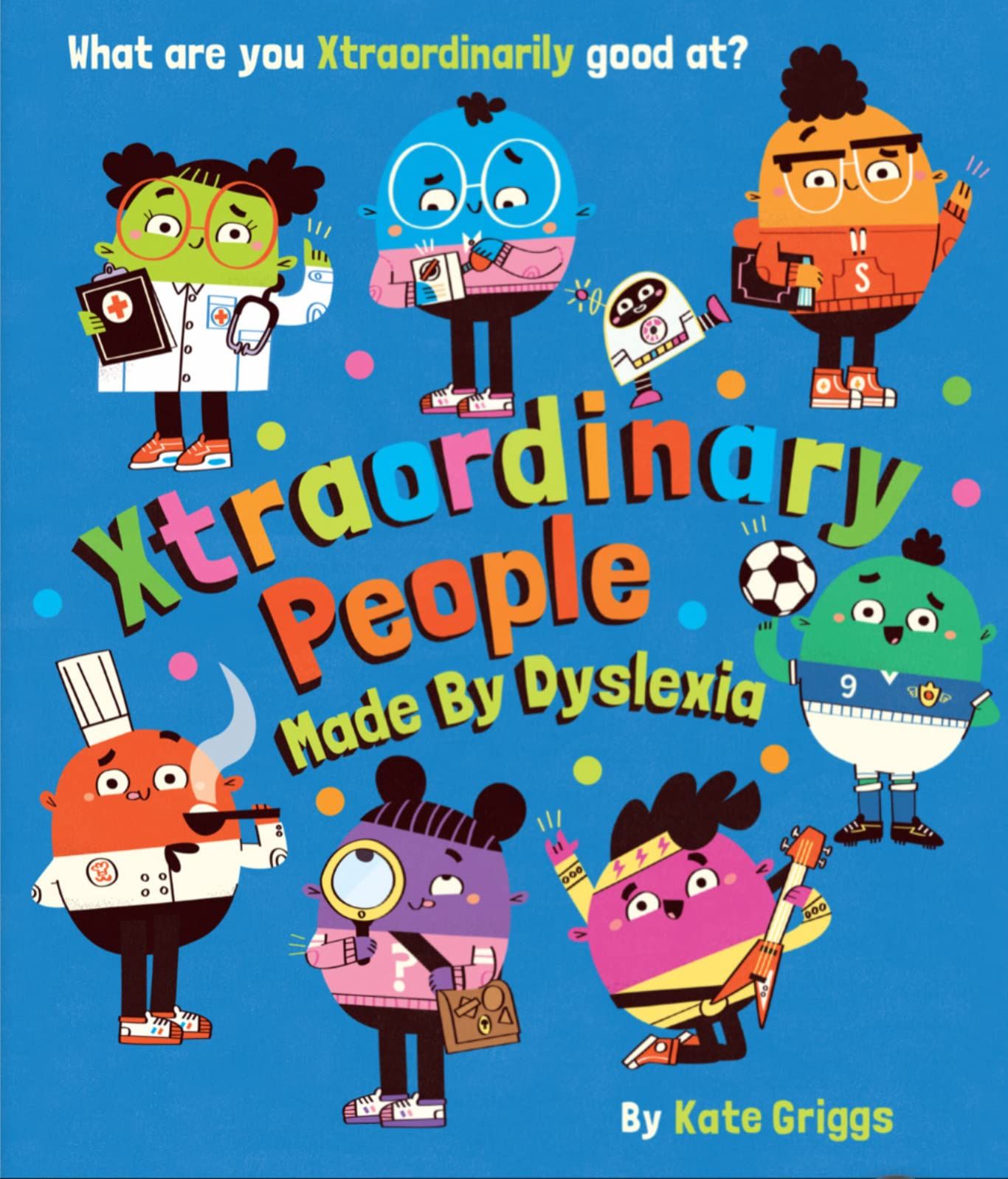
Xtraordinary People: Made By Dyslexia By Kate Griggs and Steven Woods
Author Griggs is the founder of Made By Dyslexia, a global charity led by people with dyslexia working to educate and empower people on the positive qualities of their way of thinking. Griggs writes encouragingly about dyslexia, referring to it as an “Xtraordinary way of thinking” and championing kids to find and appreciate their talents.
These dyslexia-friendly books for kids are so crucial—not only do they portray different ways of thinking and processing, but many also break down barriers to reading. And, truly, getting kids excited about books is always the first step to building a love of reading.
For more great children’s book recommendations, make sure to check out our children’s lit page.







